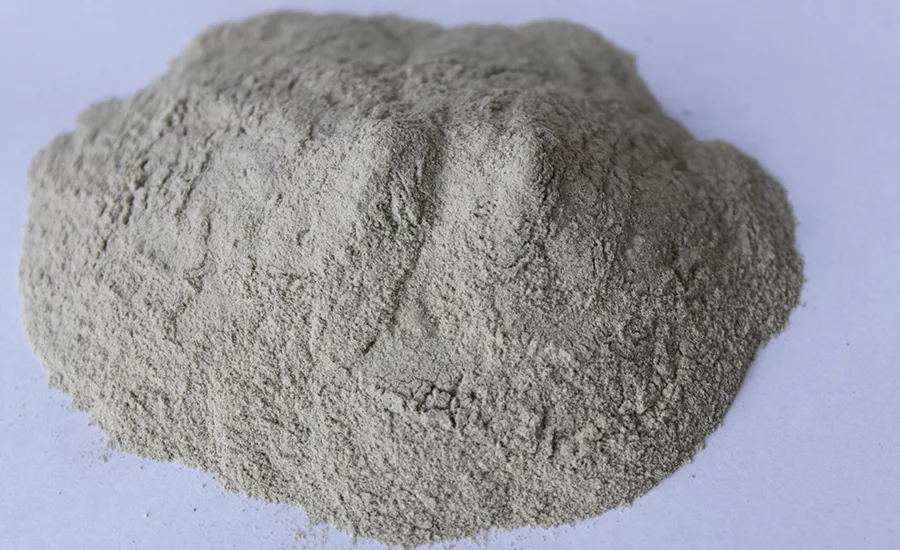Sodium Bentonite: You've Got Drilling Fluids in the Bag

Bentonite clay created during the Cretaceous period — when Tyrannosaurus rex was at the top of the food chain — makes a lot of drilling jobs possible.
A long time ago, in a galaxy far, far away … well, OK, maybe it was in a state not really so far away.
In an attempt to get back to the basics with this article, I wanted to write about some of the captivating properties of Wyoming sodium bentonite. Many times on the jobsite, we just rip open the bags and throw this stuff into the mixing system and kind of take for granted the magical powers of this clay. Now that you are totally mesmerized, let’s get into some facts about what makes this dirt so unique and sexy.
Sodium bentonite was formed in the Big Horn Basin (western U.S.) during the Cretaceous period around 65.5 to 145.5 million years ago. It was formed by volcanic ash and was covered by an inland sea. There is a finite amount of this material and there are several different grades of bentonite. Most major bentonite companies have mining operations in this same area. Just so you are aware, bentonite is used in many different industries, including metal casting, pet products (think cat litter), cosmetics and many others too numerous to mention.
Drilling fluid characteristics:
- Imagine three 1-inch-square cubes of Wyoming sodium bentonite setting on a table. Properly sheared and stressed, these three cubes could cover 66 football fields.
- Sodium bentonite is composed of platelets, which resemble thin flat cards. They are negatively charged so they are always trying to repel each other, which leads to an amazing surface area.
- Wyoming sodium bentonite is a high-swelling clay. It can absorb large quantities of water and expand up to 20 times its volume.
- Calcium-based bentonite, which is more common, is composed of needle-like structures, resulting in lower viscosities, lower gel strength, lower suspension and poor fluid loss.
Do any of the following situations sound familiar?
- The bentonite does not mix like it should or it takes a lot more bentonite to get the same viscosity.
- When we turn off the mixing equipment the bentonite settles and leaves clear water on the surface.
- The pump is making all kinds of weird noises when pumping the slurry, or the polymer gets all stringy when we mix it in.
If you have experienced any of these common situations, you might think this miraculous bentonite stuff isn’t worth the bag it came in. Do yourself a favor and check the make-up of your mix water. Water makes up 95 to 99 percent of the drilling fluid, so there’s a good chance the bentonite is good and the water is bad.
Possible problems with make-up or mix water:
- Low pH (less than 8) and/or hard (high calcium) water will not allow the platelets to repel each other like Mother Nature designed.
- Calcium will disrupt the ionic charge of the bentonite platelets and allow the platelets to clump together, which is known as flocculation.
- Well-mixed bentonite slurry will have few interactions between the particles: Remember, the platelets find each other repulsive.
- The platelets are so repulsed, they are forced together to form the nice thin, tight filter cake around the borehole to help create a stable environment.
What are drillers to do when they experienced flocculated or clumped together bentonite? The very simple answer is to add soda ash while you are initially placing the water into your mix tank. And, it doesn’t take a lot of it to do the trick. Usually, ¼ to ½ a pound per 100 gallons of water will do the job. A lot of companies fill up at the shop and know their make-up water. Other times we are forced to fill up with unfamiliar sources. A simple pH test strip will tell you the pH of your make-up water.
When in doubt, use soda ash at the recommended dosage and make your work a bit easier knowing your drilling fluid will act as it should. Bentonite and polymers like a pH of around 8.5 to 9.5, and work best in this setting.
Why use a bentonite-based drilling fluid?
- It cools and lubricates the bit.
- It cleans the hole and suspends and transports the cuttings.
- It holds the hole open and stabilizes the bore.
- It controls fluid loss, loss circulation and frack-outs.
- It reduces torque associated with sticky soil.
- It controls subsurface pressures.
Bentonite is an awesome mineral used to make an awesome drilling fluid. When hydrated properly with the right mix-water, it is second to none and is an industry standard in both the horizontal and vertical drilling market. The beauty of this fluid is that polymers and additives for special soil situations can be added to this mix to handle virtually any situation in the field. I hope you find bentonite as stellar as I do.
Looking for a reprint of this article?
From high-res PDFs to custom plaques, order your copy today!


